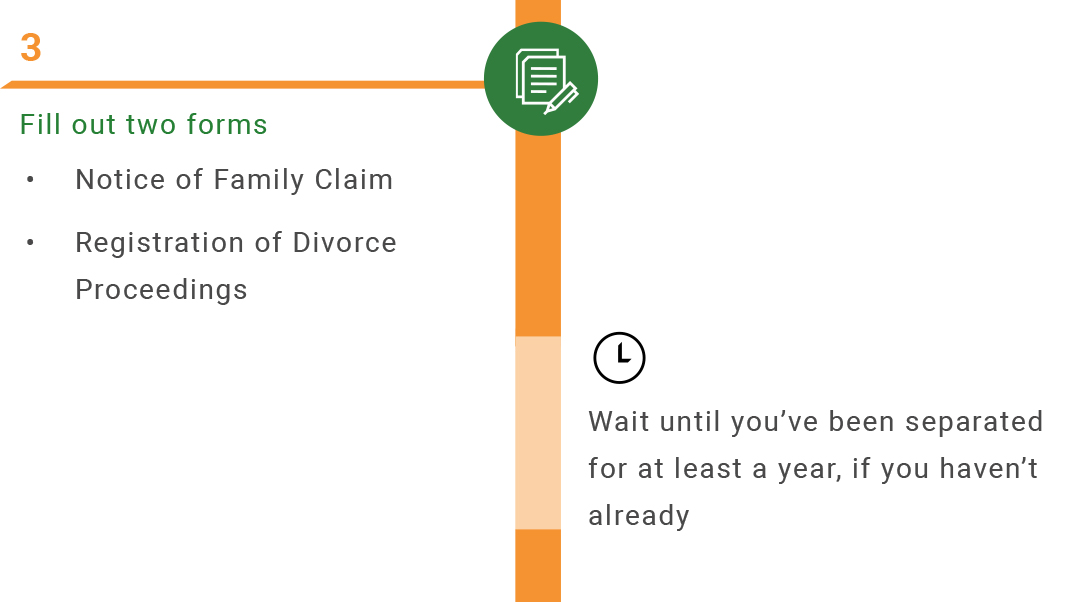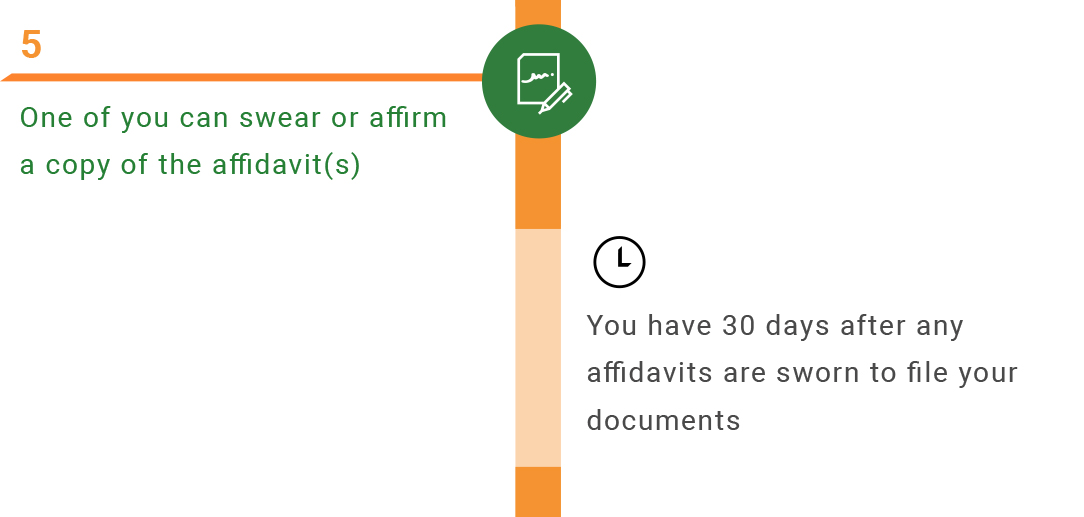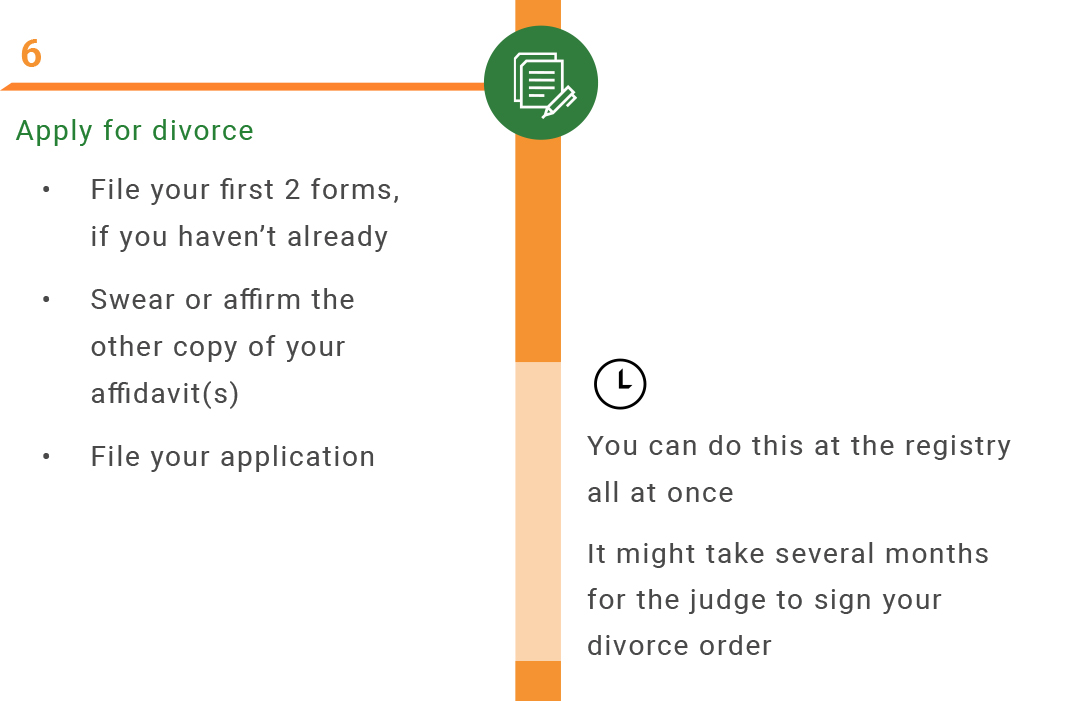Introduction
Who this guide is for
This guide is for spouses who want to make a joint application for a simple uncontested divorce. This means you both agree on all your family law issues and only need to apply for a divorce order. You both need to sign all the documents in this process.
Use this guide if all the following statements are true:
- You want to file for divorce in BC.
- You and the other person agree about getting a divorce.
- You already have written agreements or orders for:
- parenting,
- child support,
- spousal support, and
- how to divide your property and debt.
- One of you has lived in BC for at least one year right before you start your divorce and is living in BC when you start the divorce proceeding.
- You've been separated for at least one year.
- You're not applying for divorce on the grounds of cruelty or adultery.
What if this guide isn't for you?
How long does it take to do your own divorce?
It's possible to do your divorce in a few months once you've settled all your family law issues. But there are wait times, and it might take longer if:
- your Supreme Court registry is busy,
- one person lives outside your court registry's jurisdiction, or
- if your application is rejected and needs to be resubmitted.
How much does it cost to do your own divorce?
You'll pay a few different court fees when you apply for a divorce:
- The fee to open a family law case with the Supreme Court:
- $30 — if you've already filed a separation agreement with the Court (it will have a court file number on it that you can use in your divorce application), or
- $200 — if you don't have a filed separation agreement and the Notice of Joint Family Claim is the first court document you're filing.
- $10 to file the Registration of Divorce Proceedings form.
- $80 to make the final application.
You might also have to pay for:
- Making photocopies of your documents.
- Having your affidavits sworn. It costs around $40 to have this done at the court registry. Places offering notary services might charge different prices.
- Getting a certified copy of your original marriage certificate or registration of marriage. In BC, this costs $27.
- Having your marriage certificate translated into English and getting an Affidavit of Translation.
- Ordering a Certificate of Divorce (Form F56), if you want one. This costs $40.
Get legal help
Talk to a lawyer
Before you begin your own divorce, meet with a family lawyer to find out about your rights and responsibilities. You or your spouse might have a right to spousal or child support, or to property, pensions, or other assets that you don't know about. Or you might have to pay spousal or child support or take responsibility for certain debts. The court won't usually order a divorce unless your family law issues (particularly child support) have been settled in a written agreement or court order.
To find a lawyer, call the Lawyer Referral Service.
Dividing property and debts
Dividing property and debts can be complicated. If you have property and debt together, get legal advice.
You only have two years from the date of your divorce to claim (start a court action for) spousal support or your share of property and debt. See Dividing property and debts after you separate for more information.
If you can't afford a lawyer
If you can't afford a lawyer, you can get legal help in other ways, including:
Staff at Justice Access Centres in Abbotsford, Nanaimo, Surrey, Victoria, and Vancouver can also answer your questions and help you fill out forms. Call someone who can help or find your nearest office.
If you want to use a mediator, see Making mediation happen in a family law case in Supreme Court.
Work through this guide at your own pace. There's no need to rush.
- you or your spouse lives in BC,
- you agree about getting a divorce and all the family law issues relevant to your situation, and
- your marriage certificate (or registration of marriage) is in English.
You'll need a Basic BCeID account to access the Online Divorce Assistant. See how to set up a basic BCeID account if you need help.







